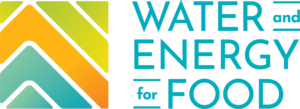SUN4Water
Training Material
The SPIS curricula exists in many countries. There is a strong collaboration with the AGSN (Africa Green Store Network – Reséau Grenier Vert d’Afrique). AGSN is a networking forum, which covers more than 30 educational institutions and more than 12 countries. Please inquire on the AGSN website and contact them directly if you have any requests on trainings.
In the years 2022-23, a couple of distance trainings (webinars) for advisors and consultants in the field of solar irrigation were implemented. The series of trainings covered the five most important expert-tools (in version 4) – up to 40 participants per session were trained with various methods and by different trainers. Find here the Curricula in Powerpoint for the six webinars:
Webinar I «Expert»
Introduction & Farm Analysis
Powerpoint
Participants get familiar with all components of the SPIS toolbox and know where to find them (Tools, Manual and Country Case Cards, E-Learning course,YouTube channel (Screencasts, Hands-on Videos…).
Participants learn about what is needed to complete the course successfully and how to get a certificate in the end: participation in discussions, homework between the sessions, presentation, and a final test.Webinar II «Expert»
Water Requirement
Powerpoint
Participants know components of SPIS (through a BINGO game),know the approach of group-work in a virtual environment andare familiar with polls.
Participants are familiar with the Water Requirement Tool and know how to determine the water requirement of different crops at a certain site.Webinar III «Expert»
Pump Sizing
Powerpoint
Webinar IV «Expert»
Irrigation & Soil
Powerpoint
Participants are familiar with different types of soil and know more about the irrigation schedule for various crops depending on soil, climate and irrigation method.
Participants are familiar with the Soil tool and know how to use it.Webinar V «Expert»
Payback
Powerpoint
Participants are aware of the financial aspects of a SPIS and can compare life cycle costs for Diesel powered pumps, grid electricity pumps with solar powered pumps and determine the break-even point of the different approaches.
Participants are familiar with the Payback tool and know how to apply it.Webinar VI «Expert»
SPIS-Training
Powerpoint
In a recording of a webinar meeting of February 5th, 2019, Mr. Ralph Steubing gives some information about the work of the company ICL which is specialized on the mining of fertilizer substances and (among others) the manufacturing of water-soluble fertilizer products, which can be integrated into an irrigation system. In the second part of the webinar, Mr. Steubing gives us some basic background information about soil chemistry. It is essential to know more about soil conditions and the demands of the crops in order to apply the correct fertilizer substances and the correct amount and thus not to waste money and to protect the environment!
In another recording of a interview of 31. January 2019, Mr. Boniface M Muthusi from Kenya is with us. He works at «Juhudi Kilimo», a microfinance institution as a Chief Credit & Risk Officer. He tells us a bit about his work in general, and what his criteria for granting a loan for financing Solar Powered Irrigation Systems to rural smallholder farmers are.
Webinar
Fertigation
This webinar is part of the e-Learning course on «Solar Powered Irrigation Systems» and has been produced by the Ostfalia University of Applied Sciences on behalf of GIZ, the German Development Agency.
**********
TIMING
*********
01:17 – Personal Introduction Ralph Steubing
01:45 – Introducing ICL
04:15 – Question 1: Feeding methods for application of fertilizer
14:25 – Question 2: Apply fertilizer into a SPIS by a small-scale farmer in Africa
18:30 – Question 3: Right amount of a fertilizer mix at a certain crop stage
27:10 – Question 4: Measurements, checks of soil and leafs
32:15 – Question 5: How to improve your fertilizing system
37:32 – Contact information Ralph Steubing & ICL
Interview
Financing Agriculture
This webinar is part of the e-Learning course on «Solar Powered Irrigation Systems» and has been produced by the Ostfalia University of Applied Sciences on behalf of GIZ, the German Development Agency.
***********
TIMING:
**********
01:13 – Personal Introduction Boniface Muthusi
02:20 – Presentation on Juhudi Kilimo
09:08 – Question 1: Background of Microfinance
11:15 – Question 2: Risk factors in financing agriculture
15:50 – Question 3: How works financing a SPIS in detail?
17:47 – Question 4: Advices for Farmers seeking loans
20:45 – Contact information Boniface Muthusi & Juhudi Kilimo
The screencasts below explain the use of five selected Excel-Tools provided by GIZ and FAO. The screencasts refer to the outdated version 4 of the sheets – however, some of the explanations might still be useful!




